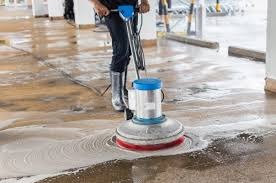Upcycling is not just a trend but a sustainable practice that can transform ordinary materials into extraordinary features in your garden. By reusing and repurposing materials, you can create a unique, eco-friendly landscape that reflects your creativity while benefiting the environment. Here’s how to incorporate upcycling into your landscaping design, turning discarded items into valuable garden elements.For more information check outbest landscaping companies in dubai
1. Understanding Upcycling in Landscaping
- Definition and Benefits
- Upcycling Explained: Upcycling involves repurposing old or discarded materials into new, useful products. In landscaping, this means using items that might otherwise end up in a landfill to create functional and aesthetically pleasing garden features.
- Environmental Impact: By upcycling, you reduce waste, minimize the need for new materials, and contribute to a more sustainable approach to gardening.
- Creative Potential
- Design Innovation: Upcycling allows for unique and personalized garden designs. Each piece has its own story and character, adding a distinctive touch to your landscape.
- Cost Efficiency: Repurposing materials can be a cost-effective way to enhance your garden without investing in expensive new items.
2. Creative Upcycling Ideas for Your Garden
- Furniture and Planters
- Old Furniture: Transform outdated or broken furniture into garden planters or seating areas. For example, wooden chairs can be repurposed as plant stands, and old dressers can become multi-tiered planters.
- Repurposed Containers: Use items like tea tins, wooden crates, and old boots as creative planters. Paint or decorate these containers to match your garden’s style.
- Pathways and Edging
- Reclaimed Brick and Stone: Incorporate reclaimed bricks or stones to create charming pathways or garden edging. These materials add character and can be sourced from old buildings or demolition sites.
- Concrete and Pavers: Old concrete or broken pavers can be used to create rustic pathways or garden borders. Arrange them in interesting patterns for a visually appealing effect.
- Garden Art and Decor
- Metal Art: Repurpose scrap metal or old tools into garden sculptures or decorative elements. Old garden tools, metal scraps, and even bicycle parts can be transformed into unique art pieces.
- Glass Bottles and Jars: Use glass bottles and jars as garden ornaments or create colorful bottle trees. These items can add a whimsical touch and reflect sunlight beautifully.
- Water Features
- Repurposed Containers: Convert old barrels, bathtubs, or sinks into water features like ponds or fountains. These items can be fitted with a water pump to create a soothing sound and a focal point in your garden.
- Rustic Waterfalls: Use reclaimed stone or broken concrete to build a rustic waterfall or cascading water feature. This adds a natural and calming element to your garden.
- Vertical Gardens and Green Walls
- Old Pallets: Repurpose wooden pallets into vertical garden structures. These can be used to grow herbs, succulents, or flowering plants in a space-saving arrangement.
- Hanging Planters: Use old gutters or wooden crates as hanging planters. These can be mounted on walls or fences to create a green wall with minimal effort.
- Garden Structures
- Trellises and Arbors: Upcycle old wooden ladders or fencing into trellises or arbors. These structures can support climbing plants and add vertical interest to your garden.
- Sheds and Storage: Repurpose old storage containers or wooden crates as garden sheds or tool storage. Customize them with paint and decorative touches to fit your garden’s theme.
3. Practical Tips for Upcycling in Landscaping
- Selection and Preparation
- Inspect Materials: Before using reclaimed materials, inspect them for damage or wear. Ensure they are safe and suitable for their intended use in the garden.
- Clean and Treat: Clean and treat materials to prevent rot, rust, or other issues. For wooden items, apply a sealant to protect against the elements.
- Design Integration
- Harmonize with Existing Elements: Ensure upcycled materials complement your existing garden design. Consider colors, textures, and styles to create a cohesive look.
- Test and Adjust: Test out different arrangements and placements before finalizing your design. Make adjustments as needed to achieve the desired effect.
- Maintenance and Care
- Regular Upkeep: Maintain upcycled garden elements by regularly checking for wear and tear. Repaint, re-stain, or repair items as needed to keep them in good condition.
- Adapt to Conditions: Consider the impact of weather and environmental conditions on your upcycled materials. Adapt your maintenance routine to address any issues that arise.
4. Embracing Sustainability
- Eco-Friendly Practices
- Resource Conservation: By upcycling, you conserve resources and reduce the demand for new materials. This contributes to a more sustainable and eco-friendly approach to gardening.
- Waste Reduction: Upcycling helps minimize waste and keeps items out of landfills. It encourages a circular economy where materials are continuously reused and repurposed.
- Inspiration and Community
- Local Resources: Look for local sources of reclaimed materials, such as salvage yards or community recycling centers. Engage with local upcycling communities for ideas and inspiration.
- Sharing Ideas: Share your upcycling projects and ideas with others. Inspire friends and neighbors to explore creative ways to reuse materials in their own gardens.
Conclusion
Upcycling in landscaping offers a creative and sustainable way to enhance your garden design while reducing waste and conserving resources. By repurposing materials such as old furniture, reclaimed bricks, and scrap metal, you can create unique and functional garden elements that reflect your personal style. Embrace the art of upcycling to transform ordinary items into extraordinary features, and enjoy a garden that is both environmentally friendly and beautifully distinctive.




